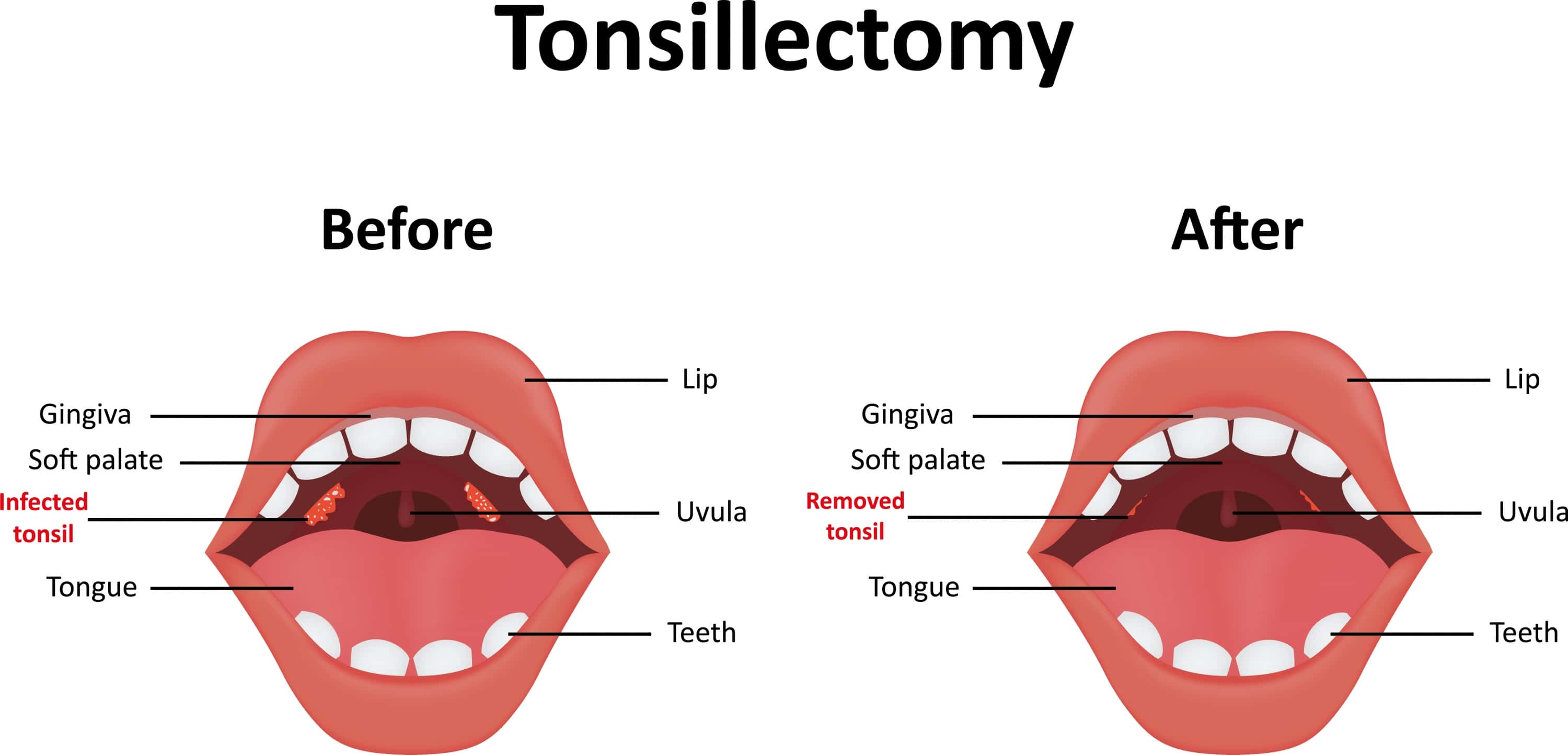
Tonsillectomy and adenoidectomy is one of the most common surgical procedures in children, and is sometimes performed in adults. Its unique constellation of patient population, surgical considerations, and anesthetic complications leads to an increased risk of morbidity and mortality that can be significantly influenced by anesthetic technique. Debate over many aspects of anesthetic management of these cases still continues.
Many indications exist for removing the tonsils and adenoids, including upper airway obstruction, dysphagia, sleep disorders such as obstructive sleep apnea (OSA), peritonsillar abscess unresponsive to medical management, febrile seizures due to tonsillitis and tonsillar biopsy.
OSA is increasingly becoming a common indication for tonsillectomy in children. Children with OSA may present with insidious symptoms such as failure to thrive, behavior problems, and poor school performance. Symptomatology often does not correlate with disease severity. This patient population is at risk for postoperative apnea and hypoxia, which in children could quickly deteriorate to cardiac arrest if not corrected. Some anesthesiologists choose to avoid long acting narcotics in these patients, however adequate postoperative pain control must be ensured to prevent other complications common in this surgical procedure such as postoperative nausea and vomiting (PONV) and emergence delirium. Multimodal analgesia is recommended with a combination of opiates, acetaminophen, and NSAIDs. Toradol is associated with increased postoperative bleeding according to a Cochrane analysis and is thus avoided, but there is insufficient data that other NSAIDs carry this same association. Surgeon-administered local anesthesia to the lesser palatine and glossopharyngeal nerves is an excellent adjunct for pain control in addition to general anesthesia, and also has the benefit of a smoother extubation.
Postoperative nausea and vomiting is a significant concern in this population, as retching can cause rebleeding of the surgical site. Dexamethasone and ondansetron are routinely administered for prophylaxis. Liberal IV hydration has also showed promise in preventing PONV, with a bolus of 10-30ml/kg/hr in older children resulting in significantly decreased symptoms.
Airway management warrants special consideration, as the airway must be shared between the anesthesiologist and surgeon. An endotracheal tube (ETT) is the gold standard, typically an oral RAE or reinforced ETT taped down the midline. However reinforced laryngeal mask airways (LMA) have been described in the literature. The use of LMAs should be limited to practitioners who are experienced in their use for tonsillectomies, as they carry an increased risk of laryngospasm and aspiration. Advocates argue that they allow for a smoother emergence and avoidance of neuromuscular blockade.
Extubation may be carried out deep or awake. The conservative approach is to remove the ETT when the patient is awake, to decrease the risk of laryngospasm, aspiration, and post-extubation apnea. However deep extubations afford smoother emerge and decreased emergence delirium. There have not been significant differences in complications between the two methods that have been borne out in the literature. Dexmedetomidine is a useful adjunct for decreasing emergence delirium in the pediatric population.
Post-tonsillectomy bleeding is a major complication of this procedure, and must be promptly recognized and managed. Establishment of large bore IV access, ready availability of suctioning, rapid sequence induction and resuscitation with blood products are crucial to avoiding mortality and morbidity.

